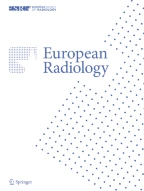Abstract
Our purpose is to codify the anterior ethmoidal artery (AEA) course and its relationship with adjacent structures. Twenty patients with cerebrovascular disease underwent selective internal carotid dual volume angiography. Fusion of the vascular and bony images was obtained successively on a second console. MDCT of the cranium was performed in all patients. To identify the AEA course, multiplanar CT reformations were obtained. In all cases the entry-point of AEA and its course were identified by means of dual volume angiography. The information was confirmed by MDCT. In a second phase, we studied another 78 patients affected by inflammatory disease and polyposis only by means of MDCT, in order to confirm the previous data obtained by comparison between angiography and MDCT. In this second phase, 110/156 vessels were indirectly detected by means of visualization of the ethmoidal entry point. In the remaining cases, AEA was directly shown due to integrity of the thin ethmoidal bone lamellae or bony canal. Dual volume angiography is essential to identify the course of the AEA (standard of reference for the interpretation of CT). In patients with benign rhinosinusal pathology, where invasivity techniques are not justified, MPR reconstructions were of pivotal importance in the evaluation of the course of the artery with particular reference to its relationship with the frontal recess.
Similar content being viewed by others
Explore related subjects
Discover the latest articles, news and stories from top researchers in related subjects.References
Chung SK, Dhong HJ, Kim HY (2001) Computed tomography anatomy of the anterior ethmoid canal. Am J Rhinol 15:77–81
Moon HJ, Kim HU, Lee JG, Chung IH, Yoon JH (2001) Surgical anatomy of the anterior ethmoidal canal in ethmoid roof. Laryngoscope 111:900–904
Eggesbo HB (2006) Radiological imaging of inflammatory lesions in the nasal cavity and paranasal sinuses. Eur Radiol 16:872–888
Basak S, Karaman CZ, Akdilli A, Mutlu C, Odabasi O, Erpek G (1998) Evaluation of some important anatomical variations and dangerous areas of the paranasal sinuses by CT for safer endonasal surgery. Rhinology 36:162–167
Cankal F, Apaydin N, Acar HI, Elhan A, Tekdemir I, Yurdakul M, Kaya M, Esmer AF (2004) Evaluation of the anterior and posterior ethmoidal canal by computed tomography. Clin Radiol 59:1034–1040
Lang J, Schafer K (1979) Ethmoidal arteries: origin, course, regions supplied and anastomoses. Acta Anat (Basel) 104:183–197
Kirchner JA, Yanagisawa E, Crelin ES, Haven N (1961) Surgical anatomy of the etmoidal arteries. Arch Otolaryngol 74:382–386
Ohnishi T, Yanagisawa E (1994) Endoscopic anatomy of the anterior ethmoidal artery. Ear Nose Throat J 73:634–636
Daniel VW, Sincoff EH, Saleem IA (2005) Anterior ethmoidal artery: microsurgical anatomy and technical considerations Neurosurgery 56(Suppl 2):406–410
Author information
Authors and Affiliations
Corresponding author
Rights and permissions
About this article
Cite this article
Pandolfo, I., Vinci, S., Salamone, I. et al. Evaluation of the anterior ethmoidal artery by 3D dual volume rotational digital subtraction angiography and native multidetector CT with multiplanar reformations. Initial findings. Eur Radiol 17, 1584–1590 (2007). https://doi.org/10.1007/s00330-006-0519-4
Received:
Revised:
Accepted:
Published:
Issue Date:
DOI: https://doi.org/10.1007/s00330-006-0519-4
